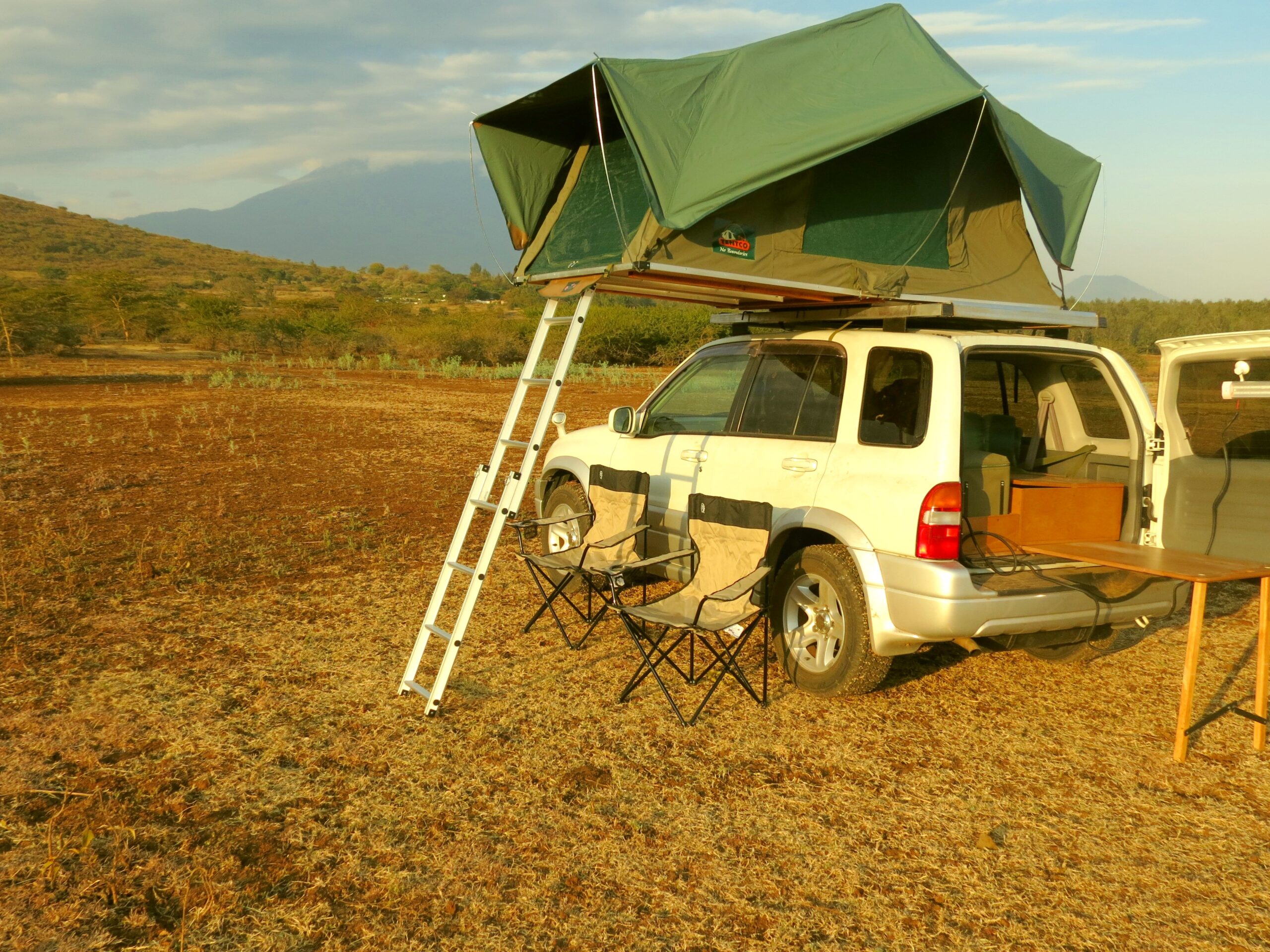Tanzania’s Hadzabe people are one of the last tribes in Africa still practicing a traditional hunter-gatherer lifestyle. Their hunting techniques are very advanced and enable them to live in areas that at first glance, seem rather inhospitable.
If you get the chance to go on a hunt with the Hadzabe, you’ll need to be fit to keep up as everything happens at a fast jog. The way they use every part of what they find or catch and share it out amongst the group could teach us all a great deal about living more sustainably.
The tall, red-robed Maasai are perhaps the most familiar African tribes people and are as much a part of the landscape of the Masai Mara and Serengeti as the vast migrating herds. It’s not uncommon to encounter a Maasai herdsman with his cattle in the Ngorongoro Crater, where they seem unperturbed by the presence of lions and other predators.
Interaction with tourists has brought a great deal of change to the Maasai, not all of it positive. It’s important to choose carefully if you want to add a Maasai cultural experience to your African safari itinerary, but a cup of sweet, milky tea in a traditional Maasai Manyatta is not to be missed!
Olduvai Gorge in Tanzania is one of the places where mankind began, in the sense that remarkable fossils of early humans dating back almost two million years have been found there. The fossil record suggests that modern humans and their predecessors have been living in this area almost continuously since then.
Olduvai Gorge was first studied by the famous Leakey family, who found the well-known ‘Nutcracker Man’ skull amongst other fossils. Today you can visit the gorge to walk in the footsteps of our distant ancestors and view their stone tools in the small museum at the site.

The Samburu people are closely allied to the Maasai but are found in Kenya’s drier northern region where they are the most visible grouping in and around the National Park named after them. The Samburu are renowned both as cattle herders and as warriors, but these days their spears and short swords are more about cultural identity than looking for a fight.
The small mirrors they carry (to admire their own beads and headdresses) see far more use! Finding water for their cattle is a Samburu preoccupation, and they call their cows to drink at hand-dug wells in dry river beds using hypnotic family songs that each herd seems to recognize.
The most popular cultural encounters in Uganda are the Batwa trail in Mgahinga Gorilla National Park, Visiting the Ik and Karamojong people in northeastern Uganda. The Batwa trail involves visiting the Batwa pygmies who were evicted from Mgahinga National Park to create room for the endangered mountain gorillas.
The Batwa Trail in Mgahinga is different from the Batwa visit in Bwindi because it is more comprehensive. You get a chance to be led into the forest by the Batwa themselves. While with them, you can learn about their ancient hunting practices and understand why it has been so hard for them to adapt to life outside the forest. All these will make your visit worthwhile in Uganda.
Enjoy en-route cultural sites to Bwindi like Igongo Cultural Centre near Mbarara town is another great stop for a cultural-fulfilling experience when visiting Uganda. There is a well-researched museum depicting the history of Ankole and the general way of life of the Banyankole. The cultural center also has state-of-the-art hotel rooms providing great accommodation.
Uganda has got many other cultural sites which include; the Kabaka’s Palace, Kasubi tombs, Ndere Center, Namugongo Martyr’s Shrine, Uganda Museum among many others. Some of these are among the top tourist things to do and see around Kampala. You cannot miss this when you choose to go for a city tour in Uganda.
Visit Kigali Genocide Memorial arguably the most visited museum in Rwanda. It was built in memory of about 250,000 people who were killed during the Rwanda genocide. The Museum is divided into 3 major areas, one remembering the children killed, another for the adults and one focusing on genocides which occurred in other parts of the world. Visiting this museum will help you understand the events leading to and after the genocide
Kandt House Museum, the National History Museum is one of the most important cultural and historical sites in Rwanda. It was initially named after Dr. Richard Kandt and was the first modern building in Rwanda.
Kandt was the first governor of Rwanda during German colonial rule. The Museum is divided into three parts. The first exhibition area shows how life was before the country was colonized. The second part describes life during the colonial era while the third part depicts life after Rwanda got independence.
IbyI’wacu cultural village is the most visited cultural site in Rwanda and this due to its close proximity to where tourists spot mountain gorillas. The cultural site is found in Musanze district and was founded by a former warden of the Volcanoes National Park.
Tourists can enjoy watching how the Batwa pygmies hunted, traditional Intore dancers, learn how to cook Kinyarwanda dinner or enjoy traditional beer. There is also an opportunity to dress like a King or Queen and live in a thatched palace and taking this experience you require enough days like 3 – 4 weeks while on road trip in Africa with the 4×4 rooftop tent vehicle that can hit the rough track.


